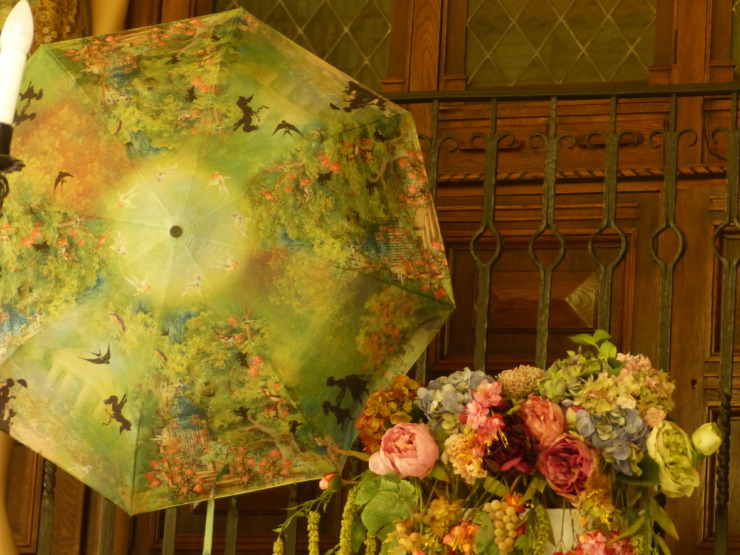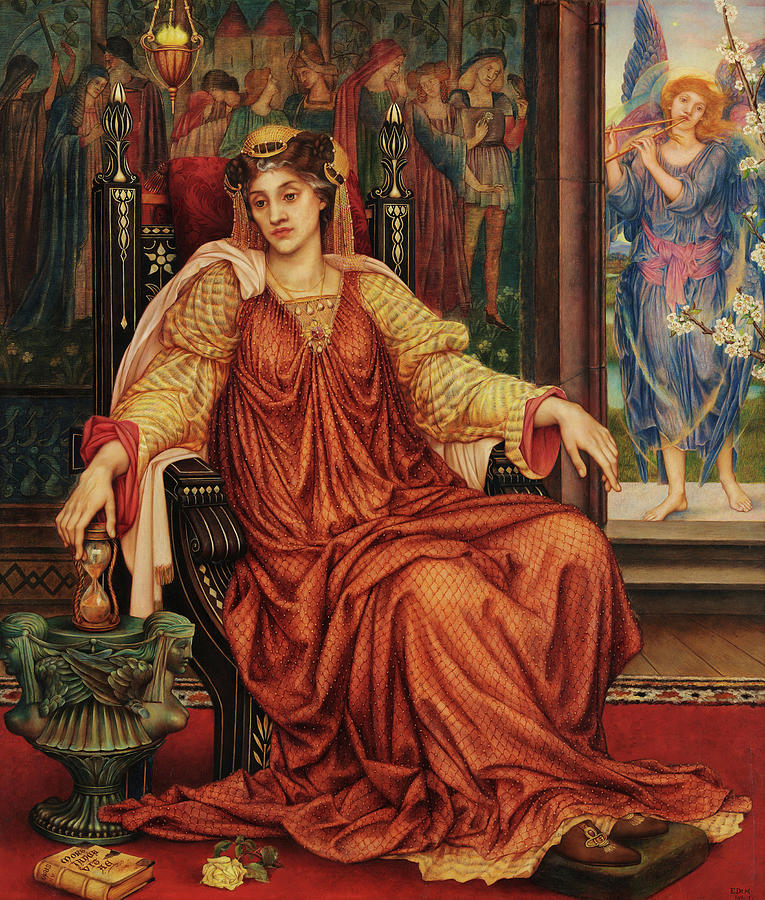After Dark Vapors Have Oppressed Our Plains
After dark vapours have oppressed our plains
For a long dreary season, comes a day
Born of the gentle South, and clears away
From the sick heavens all unseemly stains.
The anxious month, relievèd of its pains,
Takes as a long-lost right the feel of May;
The eyelids with the passing coolness play,
Like rose leaves with the drip of summer rains.
The calmest thoughts come round us—as of leaves
Budding,—fruit ripening in stillness,—autumn suns
Smiling at eve upon the quiet sheaves,—
Sweet Sappho’s cheek;—a smiling infant’s breath,—
The gradual sand that through an hour-glass runs,—
A woodland rivulet, a Poet’s death.
-John Keats
Enjoy Artistic Representations of “After Dark Vapors Have Oppressed Our Plains” by John Keats

Kígyó street 5 szám, Downtown Budapest, Hungary. Michal Negrin – Cool Budapest. Photo by Elekes Andor, 2016.

The Hourglass by Evelyn de Morgan, 1905.
Listen to Readings of “After Dark Vapors Have Oppressed Our Plains”
Listen to Musical Interpretations of “After Dark Vapors Have Oppressed Our Plains” by John Keats
John Keats Biography
Keats was born in London on Oct. 31, 1795; a few weeks later he was baptized at St. Botolph Without Bishopsgate Church, near where his parents lived and father worked as the manager of a stable owned by his father-in-law. Keats was the eldest of four children, with George, Tom, and Fanny following him. The family was well off enough that the boys were sent to Clark’s Academy in Edmonton at what is now the north London borough of Enfield for their education; it was riding his horse home from a visit to the school that Keats’ father fell and died the next day. His mother remarried (rather quickly, in fact), fought with the rest of the family, and died fairly young from consumption or tuberculosis, which was all too common at the time and would eventually claim the life of Keats’ youngest brother, Tom, as well as Keats himself.
He was apprenticed to a local doctor, but the relationship didn’t seem to work too well. He ended up working at St. Guy’s Hospital in the Southwark district of London, continuing his medical training and writing poetry (the site of the original St. Guy’s in now occupied by London’s tallest office building, known locally as “The Shard”).
While Keats had numerous city connections (Anita Miller also has a “Keats in the City” walk), it is with Hampstead that he is most closely associated. Fellow poets lived there, as did the editor who first published his poetry. Artists whom Keats associated with lived there. Keats himself would move there with his brothers. Keats and his friends would wander Hampstead Heath, talking and arguing poetry and the issues of the day. After moving into Wentworth House in Hampstead, Keats wrote five of six famous odes, including “Ode to a Nightingale.” And it would be at Wentworth House in Hampstead that Keats would realize that he was dying from the same disease that took his mother and younger brother.
Enjoyed After Dark Vapors Have Oppressed Our Plains by John Keats and want to know more about Keats’ life? Try A Month With Keats: A Walk Into His Life
That’s it for After Dark Vapors Have Oppressed Our Plains!
BUY ‘HOW TO WRITE A FORM POEM’ NOW!
